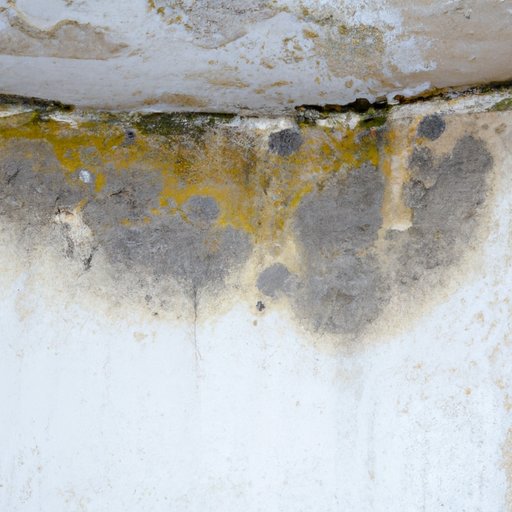Introduction
Mold is a type of fungus that can grow on virtually any surface, including walls, ceilings, and floors. It thrives in moist, warm environments, and it can cause serious health problems if it is not dealt with properly. Unfortunately, many people don’t realize that mold can travel from room to room, and even from floor to floor, through walls, making it difficult to eradicate. In this article, we will explore the science behind mold’s ability to travel through walls and discuss the best ways to prevent and treat it.
Examining the Science Behind Mold’s Ability to Travel Through Walls
Mold spores are microscopic particles that are released by the fungus when it reproduces. These spores can easily be carried through the air, which means they can move from room to room or even from floor to floor. This is particularly true in buildings with poor ventilation, as the spores can become trapped in the air and spread throughout the structure.
Exploring How Mold Spores Move from Room to Room
In addition to being carried through the air, mold spores can also travel through walls via cracks, crevices, and other openings. This is especially true in older buildings, where the walls may be more porous and less insulated. The spores can also be transported through plumbing systems, as they can latch onto dust particles and follow them through pipes.
Investigating the Role of Humidity in Mold’s Mobility
Humidity is another factor that can play a role in mold’s ability to travel through walls. High humidity levels create a damp environment that encourages mold growth, and this moisture can help the spores to spread. To prevent mold from spreading, it is important to keep humidity levels low, ideally between 30-50%.
Understanding the Reasons Why Mold Prefers Certain Building Materials
Different building materials can also affect mold’s mobility. For example, porous materials such as drywall and wood are more likely to allow mold to spread than non-porous materials like concrete and metal. This is because porous materials provide an ideal environment for mold growth, as they are more likely to retain moisture and provide a source of food for the fungus.
Analyzing the Impact of Air Flow on Mold Migration
Air flow is another important factor to consider when it comes to mold migration. Poorly ventilated rooms can trap mold spores, allowing them to accumulate and spread. On the other hand, rooms with good ventilation will help to disperse the spores, reducing the risk of mold and keeping the air clean.
Examining the Effects of Different Building Materials on Mold Growth and Spread
Finally, different building materials can have an effect on mold growth and spread. For instance, materials such as concrete and metal are less likely to retain moisture and are therefore less prone to mold growth. On the other hand, materials such as wood, cardboard, and paper are more likely to absorb moisture, which can encourage mold growth and spread.
Conclusion
In conclusion, mold can travel through walls, and its ability to do so is affected by several factors. Humidity levels, air flow, and the type of building material can all play a role in mold’s mobility. To prevent mold from spreading, it is important to keep humidity levels low and ensure good ventilation. Additionally, using non-porous building materials can help to reduce the risk of mold growth and spread.
If you suspect that your home has a mold problem, it is important to take action immediately. Hiring a professional mold remediation company can help to identify the source of the problem and remove it safely. Additionally, there are a number of resources available to help you learn more about mold and how to prevent it from spreading.
(Note: Is this article not meeting your expectations? Do you have knowledge or insights to share? Unlock new opportunities and expand your reach by joining our authors team. Click Registration to join us and share your expertise with our readers.)
